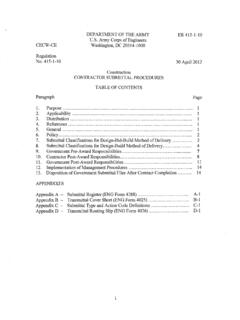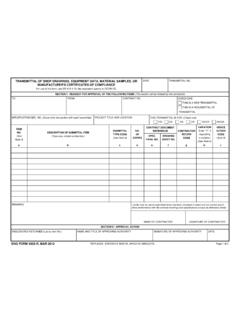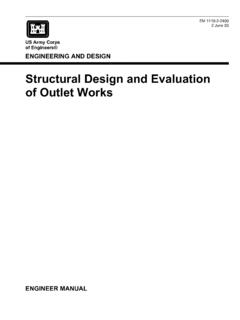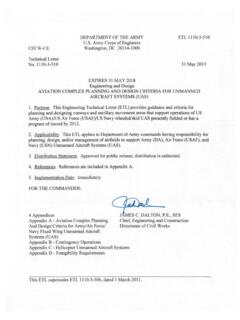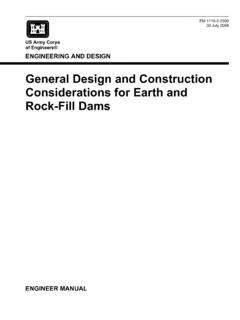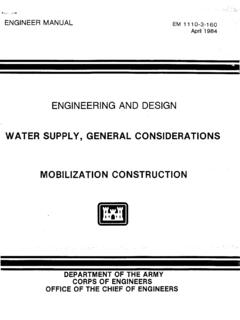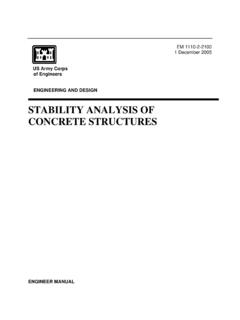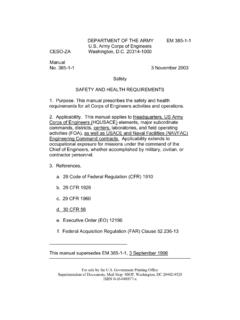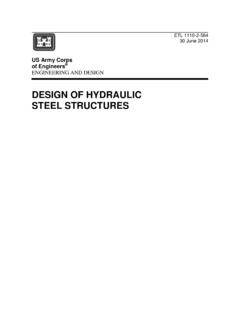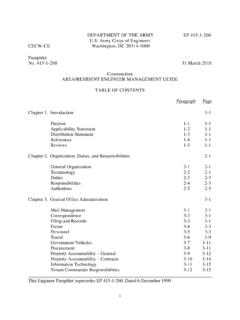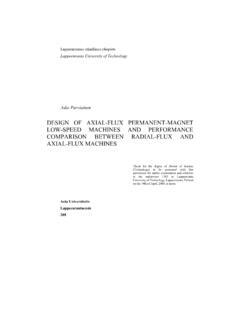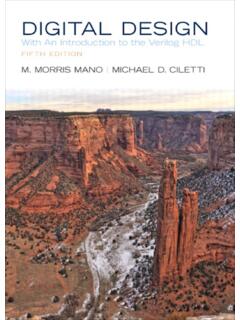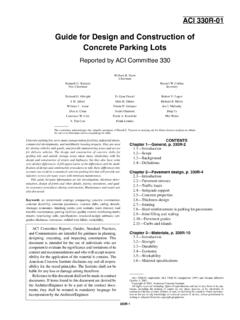Transcription of Slope Stability - United States Army
1 EM 1110-2-1902. 31 Oct 2003. US Army Corps of Engineers . ENGINEERING AND DESIGN. Slope Stability ENGINEER MANUAL. AVAILABILITY. Electronic copies of this and other Army Corps of Engineers (USACE) publications are available on the Internet at This site is the only repository for all official USACE engineer regulations, circulars, manuals, and other documents originating from HQUSACE. Publications are provided in portable document format (PDF). DEPARTMENT OF THE ARMY EM 1110-2-1902. Army Corps of Engineers CECW-EW Washington, DC 20314-1000. Manual No. 1110-2-1902 31 October 2003. Engineering and Design Slope Stability .
2 1. Purpose. This engineer manual (EM) provides guidance for analyzing the static Stability of slopes of earth and rock-fill dams, slopes of other types of embankments, excavated slopes, and natural slopes in soil and soft rock. methods for analysis of Slope Stability are described and are illustrated by examples in the appendixes. Criteria are presented for strength tests, analysis conditions, and factors of safety. The criteria in this EM are to be used with methods of Stability analysis that satisfy all conditions of equilibrium. methods that do not satisfy all conditions of equilibrium may involve significant inaccuracies and should be used only under the restricted conditions described herein.
3 2. Applicability. This EM is applicable to all USACE elements and field operating activities having responsibility for analyzing Stability of slopes. 3. Distribution Statement. This publication is approved for public release; distribution is unlimited. 4. Scope of the Manual. This manual is intended to guide design and construction engineer, rather than to specify rigid procedures to be followed in connection with a particular project. FOR THE COMMANDER: 7 Appendixes MICHAEL J. WALSH. (See Table of Contents) Colonel, Corps of Engineers Chief of Staff This manual supersedes EM 1110-2-1902, 1 April 1970.
4 DEPARTMENT OF THE ARMY EM 1110-2-1902. Army Corps of Engineers CECW-EW Washington, DC 20314-1000. Manual No. 1110-2-1902 31 October 2003. Engineering and Design Slope Stability . Subject Paragraph Page Chapter 1. Introduction Purpose and Scope ..1-1 1-1. Applicability ..1-2 1-1. 1-1. Notation and 1-1. Basic Design Considerations ..1-5 1-1. Stability Analysis and Design 1-4. Unsatisfactory Slope 1-5. Chapter 2. Design Considerations 2-1. Aspects Applicable to all Load 2-2. Analyses of Stability during Construction and at the End of Construction ..2-3 2-9. Analyses of Steady-State Seepage 2-10.
5 Analyses of Sudden Drawdown Stability ..2-5 2-11. Analyses of Stability during Earthquakes ..2-6 2-12. Chapter 3. Design Criteria 3-1. New Embankment Dams ..3-2 3-3. Existing Embankment 3-3. Other 3-4. Chapter 4. Calculations and Presentations Analysis 4-1. Verification of Computer Analyses and 4-1. Presentation of the Analysis and Results ..4-3 4-7. Appendix A. References Appendix B. Notation i EM 1110-2-1902. 31 Oct 03. Subject Paragraph Page Appendix C. Stability Analysis Procedures Theory and Limitations Appendix D. Shear Strength Characterization Appendix E. Chart Solutions for Embankment Slopes Appendix F.
6 Example Problems and Calculations Appendix G. Procedures and Examples for Rapid Drawdown ii EM 1110-2-1902. 31 Oct 03. Chapter 1. Introduction 1-1. Purpose and Scope This engineer manual (EM) provides guidance for analyzing the static Stability of slopes of earth and rock-fill dams, slopes of other types of embankments, excavated slopes, and natural slopes in soil and soft rock. methods for analysis of Slope Stability are described and are illustrated by examples in the appendixes. Criteria are presented for strength tests, analysis conditions, and factors of safety. The criteria in this EM are to be used with methods of Stability analysis that satisfy all conditions of equilibrium.
7 methods that do not satisfy all conditions of equilibrium may involve significant inaccuracies and should be used only under the restricted conditions described herein. This manual is intended to guide design and construction engineers, rather than to specify rigid procedures to be followed in connection with a particular project. 1-2. Applicability This EM is applicable to all USACE elements and field operating activities having responsibility for analyzing Stability of slopes. 1-3. References Appendix A contains a list of Government and non-Government references pertaining to this manual.
8 Each reference is identified in the text by either the designated publication number or by author and date. 1-4. Notation and Glossary Symbols used in this manual are listed and defined in Appendix B. The notation in this manual corresponds whenever possible to that recommended by the American Society of Civil Engineers. 1-5. Basic Design Considerations a. General overview. Successful design requires consistency in the design process. What are considered to be appropriate values of factor of safety are inseparable from the procedures used to measure shear strengths and analyze Stability .
9 Where procedures for sampling, testing, or analysis are different from the procedures described in this manual, it is imperative to evaluate the effects of those differences. b. Site characterization. The Stability of dams and slopes must be evaluated utilizing pertinent geologic information and information regarding in situ engineering properties of soil and rock materials. The geologic information and site characteristics that should be considered include: (1) Groundwater and seepage conditions. (2) Lithology, stratigraphy, and geologic details disclosed by borings and geologic interpretations.
10 (3) Maximum past overburden at the site as deduced from geological evidence. (4) Structure, including bedding, folding, and faulting. (5) Alteration of materials by faulting. 1-1. EM 1110-2-1902. 31 Oct 03. (6) Joints and joint systems. (7) Weathering. (8) Cementation. (9) Slickensides. (10) Field evidence relating to slides, earthquake activity, movement along existing faults, and tension jointing. c. Material characterization. In evaluating engineering properties of soil and rock materials for use in design, consideration must be given to: (1) possible variation in natural deposits or borrow materials, (2) natural water contents of the materials, (3) climatic conditions, (4) possible variations in rate and methods of fill placement, and (5) variations in placement water contents and compacted densities that must be expected with normal control of fill construction.
